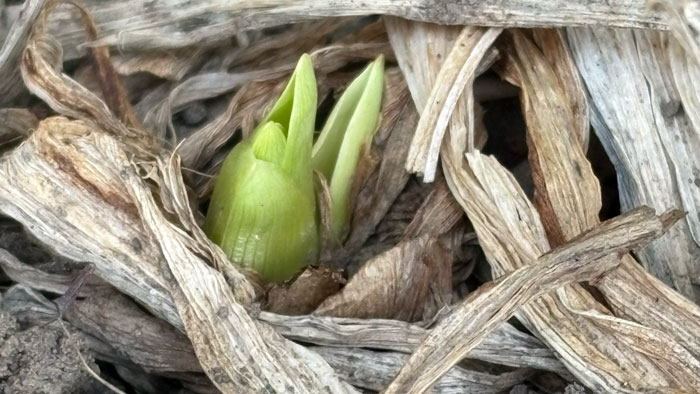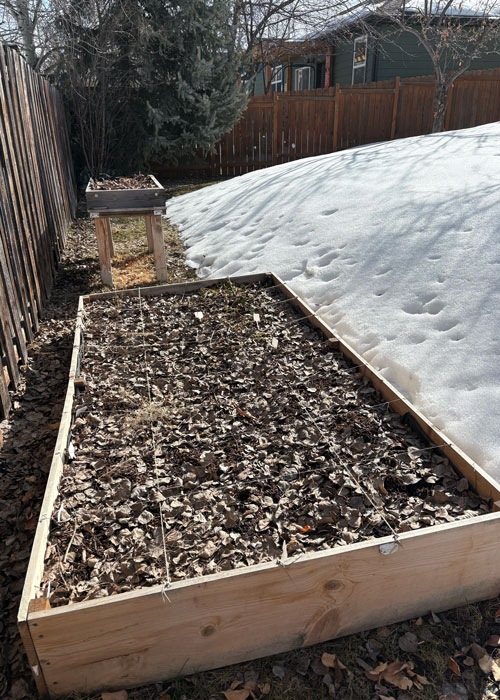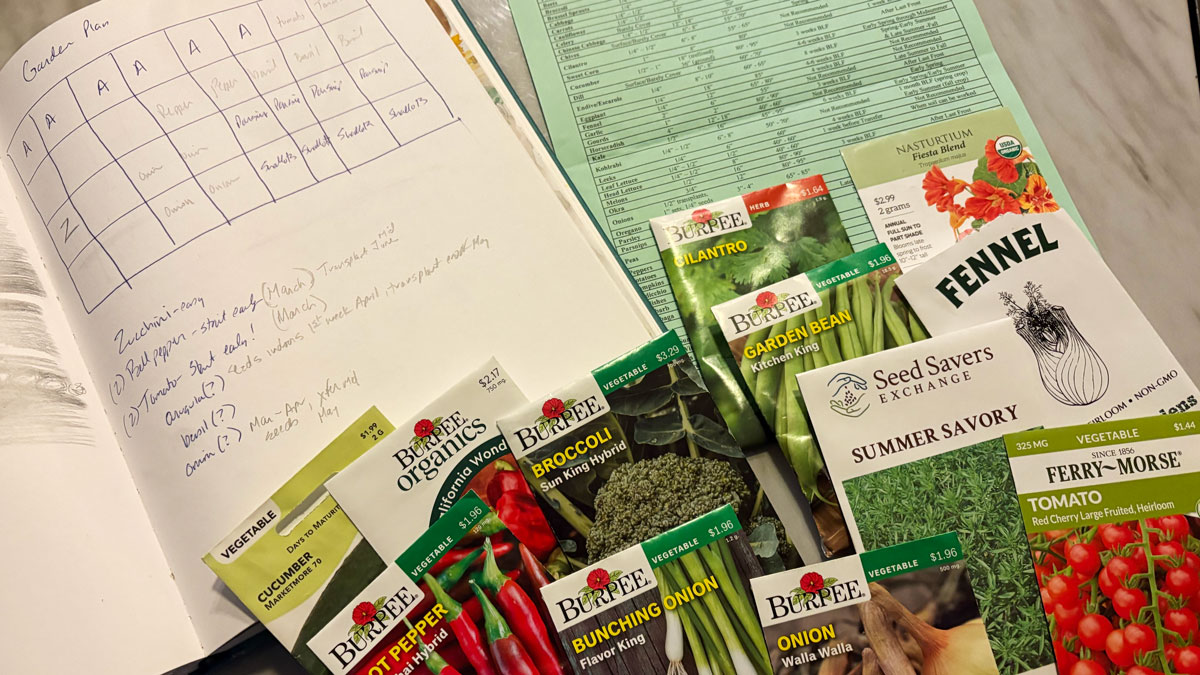While Bozeman is still getting sporadic snow, but I’m beginning to see small green shoots pushing up from the ground. Spring is on its way so I the excitement has got me started planning a square-foot garden. Since this is my second year using this method to grow vegetables, I’m refining my approach based on last year’s lessons learned.
If you want to go to the source, this is the original book about Square Foot Gardening.

Indoor Seed Starting Setup
Most of my vegetables did not fully ripen in time last year, I’m starting my seeds indoors this year. I put together a small setup in the garage that includes two seed trays. They each have (8) 6-cell inserts for 96 individual planting cells. The trays have plastic domes that act as mini-greenhouses, a heat mat that increases soil temperature by about 20°F above the ambient temperature, and grow lights on 12-hour timers. I plan to start the seeds April 1. That is about two months before our last frost date, which in Bozeman is around June 1.
Since I expect only about 30% of my seedlings to survive, I’m starting all 96 cells and will transplant the healthiest ones into my raised beds and containers.
Raised Bed Layout
My main garden consists of two raised beds:

- A 4′ x 8′ raised bed (32 square feet)
- A 2′ x 4′ raised bed (8 square feet) for strawberries and Nasturtium
- Additional containers for overflow, herbs, and specific plants like beans and fennel
Last year, I planted asparagus crowns in six squares along the top row, and I’m waiting to see if they return this year. In the bottom right corner, I left shallots and parsnips in the ground over winter to see if they will grow any bigger. They were too small to eat last season. That means I have 18 squares available for new plantings, 24 if I decide to discard the shallots and parsnips when it’s time to transplant my seedlings.
Seed Starting Calculations
Different plants have different spacing requirements in a square-foot garden. Here’s how I’m allocating my space:
Plants for the Raised Bed:
- Walla Walla Onions – 4 per square, 2 squares → 8 onions (24 seeds in trays, assuming 30% survival)
- Bunching Onions – 16 per square, 2 squares → 32 onions (32 seeds in trays)
- Broccoli – 1 per square, 1 square → 1 plant (3 seeds in trays)
- Cucumbers – 1 per square, 3 squares → 3 plants (9 seeds in trays)
- Bell Peppers – 1 per square, 3 squares → 3 plants (9 seeds in trays)
- Tomatoes – 1 per square, 2 squares → 2 plants (4 seeds in trays)
Plants for Containers:
- Fennel – Grown in a container → 5-6 plants (6 seeds in small pots)
- Beans – 5 per 12” container → 10 plants (10 seeds in trays)
- Summer Savory – 5-6 per container, will reseed as needed
- Cilantro – 3 per 12” container, will reseed as needed
After counting that all up, I realized my math was off. So, I laid out my garden on a grid and recalculated it. On my garden grid, taller plants like tomatoes, cucumbers, and peppers will be planted in the back, with shorter plants like onions and broccoli in the front.
This is what I came up with:

Each plastic insert has 4 cells, so I will plant my seedlings in multiples of 4 so it’s easier to keep track of them. I’ll label my seedling trays carefully so I know exactly what’s growing where when it’s time to transplant.
Since most of these seedlings take 6-8 weeks to mature before transplanting, I’ll start everything on April 1. If some plants outgrow their trays before the weather is warm enough, I can transplant them into larger containers indoors until the frost danger passes.
Finalizing the Layout
As the seedlings grow, some will perish before they are ready to be transplanted or during the hardening process. I will remain flexible and adjust the garden layout to accommodate those changes. Also, I will check if the parsnips and shallots from last year have grown and assess if they are worth keeping. If not, I will remove them before transplanting so I have room for the new seedlings in my garden.
Planning a square-foot garden is always an experiment, and I’m excited to see how everything grows. Next I plan to post about my garage setup and how my seedlings do with the heat mats and indoor grow lights!


Leave a Reply